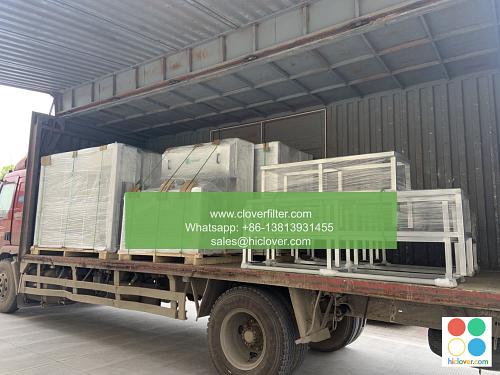The Science Behind Air Filter Extensions: A Deep Dive

Air filter extensions have become an essential component in various industries, including heating, ventilation, and air conditioning (HVAC), air purification systems, and industrial processes. These extensions play a crucial role in enhancing the performance and efficiency of air filtration systems, and their science is rooted in the principles of aerodynamics and fluid mechanics. In this article, we will delve into the science behind air filter extensions, exploring their design and functionality, application areas, and key benefits.
##
Understanding Air Filter Extensions
Air filter extensions, also known as filter socks or filter sleeves, are designed to extend the life of air filters and improve their efficiency. These extensions are typically made of a porous material, such as polyester or cotton, and are attached to the air filter using adhesives or mechanical fasteners. The primary function of air filter extensions is to capture large particles and pre-filter the air before it reaches the main filter, thereby reducing the pressure drop and increasing the airflow.
##
Design and Functionality
The design and functionality of air filter extensions are critical to their performance. These extensions are typically custom-designed to fit specific air filter applications, taking into account factors such as airflow rates, particle sizes, and operating temperatures. The porosity of the extension material is also crucial, as it determines the efficiency of particle capture and the pressure drop across the filter. Furthermore, air filter extensions can be treated with antimicrobial agents to prevent the growth of mold and bacteria, which can compromise the indoor air quality.
##
Application Areas
Air filter extensions have a wide range of applications across various industries, including:
* HVAC systems: Air filter extensions are used to improve the efficiency of HVAC systems, reducing energy consumption and minimizing maintenance costs.
* Air purification systems: These extensions are used to enhance the performance of air purification systems, capturing 99.97% of particles as small as 0.3 microns.
* Industrial processes: Air filter extensions are used in various industrial processes, such as chemical processing, pharmaceutical manufacturing, and food processing, to ensure clean air and prevent contamination.
* Commercial and residential buildings: Air filter extensions are used in commercial and residential buildings to improve indoor air quality, reducing allergies and respiratory problems.
##
Key Benefits
The use of air filter extensions offers several key benefits, including:
* Extended filter life: Air filter extensions can extend the life of air filters by up to 50%, reducing maintenance costs and
* Improved efficiency: These extensions can improve the efficiency of air filtration systems, reducing energy consumption and minimizing pressure drop.
* Enhanced indoor air quality: Air filter extensions can capture large particles and pre-filter the air, improving indoor air quality and reducing allergies and respiratory problems.
* Cost savings: The use of air filter extensions can result in significant cost savings, reducing energy consumption, maintenance costs, and minimizing downtime.
In conclusion, air filter extensions are a critical component in various industries, including HVAC, air purification systems, and industrial processes. Their science is rooted in the principles of aerodynamics and fluid mechanics, and their design and functionality are crucial to their performance. With their wide range of applications and key benefits, air filter extensions are an essential tool for improving indoor air quality, reducing energy consumption, and minimizing maintenance costs. It seems like you forgot to include the prompt. Please go ahead and provide the prompt, and I’ll do my best to assist you!

